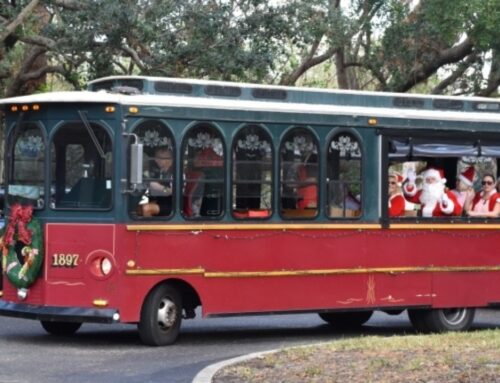When selecting an assisted living community, one important question is about staffing. How many caregivers are available for each resident? This ratio can significantly impact the quality of care, individual attention, and overall well-being of residents.
Knowing the caregiver-to-resident ratio in assisted living is important. It allows families to make informed choices about the best living arrangements for their aging loved ones.
In this blog, we’ll explore how many caregivers are typically assigned per resident in assisted living facilities, the factors that influence this ratio, and why it’s important for your loved one’s care.
The Importance of Caregiver-to-Resident Ratio
Assisted living communities support seniors who need assistance with ADLs like dressing, bathing, and medication management. They also help seniors who wish to maintain aspects of living independently in their daily routines.
The caregiver-to-resident ratio is essential for residents to receive the support they need. It ensures they get the right help with their daily living activities. This ratio often determines the quality of care and how quickly caregivers can respond to residents’ needs. Having enough staff on hand can improve resident safety, health, and overall satisfaction with their living environment.
Factors That Influence Caregiver-to-Resident Ratio
The number of caregivers per resident in assisted living can vary depending on several factors. These include:
1. Level of Care Required
Residents who need more assistance with Activities of Daily Living (ADLs) such as bathing, dressing, and mobility may require a higher staffing ratio. The level of care required plays a crucial role in determining staffing levels. Residents with limited mobility or those needing help with feeding and medication often require more frequent and personalized attention.
To address these needs, some facilities have specialized areas or units. Memory care or high-need wings provide more focused attention to residents with greater needs especially memory loss. In these settings, caregivers are trained to handle more complex needs, ensuring residents receive the attention and assistance tailored to their unique conditions. This setup improves safety, comfort, and overall quality of life for residents who need extra support.
2. Facility Size
Larger assisted living communities might hire more caregivers to manage the greater number of residents. However, this doesn’t always result in a lower caregiver-to-resident ratio, as the increased number of residents may balance out the higher staff count. In some cases, larger facilities may prioritize efficiency over personalization, leading to a higher workload for individual caregivers.
On the other hand, smaller facilities often emphasize a more intimate caregiving experience, with fewer residents per caregiver, allowing for more personalized attention and stronger relationships between staff and residents.
Ultimately, both larger and smaller facilities have their advantages, but the size of the community should be carefully considered based on the type of care your loved one requires.
3. Caregiver Shifts and Availability
Caregivers follow a rotating shift schedule to ensure that residents receive assistance throughout the day and night. However, the number of caregivers on duty can vary depending on the time of day. For instance, daytime shifts generally have more caregivers available as residents require more help with daily activities, social events, and meals.
Night shifts, on the other hand, may have fewer staff members since most residents are asleep and less active. This rotation ensures 24-hour coverage while balancing the workload, but it’s important to confirm with each facility how they manage staff availability during different shifts to meet your loved one’s specific care needs.
4. State Regulations
Some states have regulations that dictate the minimum number of caregivers that must be available for assisted living residents. These regulations vary by state, so it’s important to research local laws when considering different facilities.
Typical Staff-to-Resident Ratios in Assisted Living
While each state has different rules, it’s important to know that assisted living facilities don’t provide one-on-one care. The average staff-to-resident ratio is often 1 caregiver for every 8 residents during the day (1:8). This ratio may increase during nighttime hours, when fewer staff are on duty and residents require less active assistance.
These ratios are typical, but not every facility follows them. The level of care residents need can greatly affect the required staffing.
Specialized Care Units and Ratios
Residents in memory care units often need specialized medical care and attention. This is why the caregiver-to-resident ratio is usually lower for them. This allows caregivers to provide more focused attention and manage complex medical needs, including dementia or Alzheimer’s care.
In memory care units, where residents require closer attention for both daily living and medical care, the ratio tends to be smaller, with 1 caregiver for every 5 residents.
How to Evaluate Caregiver Ratios During Facility Tours
When touring assisted living facilities, it’s important to ask specific questions about their caregiver-to-resident ratio. Here are a few key questions you can ask:
- What is the caregiver-to-resident ratio during the day and at night?
- How does the ratio change based on the level of care a resident need?
- Is additional staff available in case of emergencies or increased needs?
By asking these questions, you’ll gain a clearer understanding of how much attention and care your loved one will receive.
Why the Staff-to-Resident Ratio Matters
The caregiver-to-resident ratio is a vital aspect of ensuring quality care in assisted living. A low ratio means residents are more likely to receive personalized care and prompt attention. This is especially important for seniors who may need assistance with mobility, hygiene, or managing chronic medical conditions.
Additionally, facilities with adequate staffing are better equipped to handle emergencies, provide consistent care, and create a more comfortable environment for residents.
Conclusion
The caregiver-to-resident ratio is a critical factor when choosing an assisted living community. It directly impacts the level of care and personal attention residents receive. Knowing the typical caregiver ratios and what affects them is important. Asking the right questions on facility tours will help you pick the best care for your loved one.
Making sure there are enough caregivers at the facility can improve your loved one’s quality of life and give the family member peace of mind.
At My Care Finders, we know how tough it can be to choose the right assisted living community for your loved one. We offer free help to families in Florida, guiding them through the process of finding the right assisted living community. We provide personalized support based on your loved one’s needs.
If you’re looking for a community with a low caregiver-to-resident ratio, memory care services, or other specific needs, our expert senior care advisors are ready to assist you. We’ll work with you to explore all the available options, ensuring your loved one receives the best care possible in a community that feels like home. Let us support you every step of the way!





